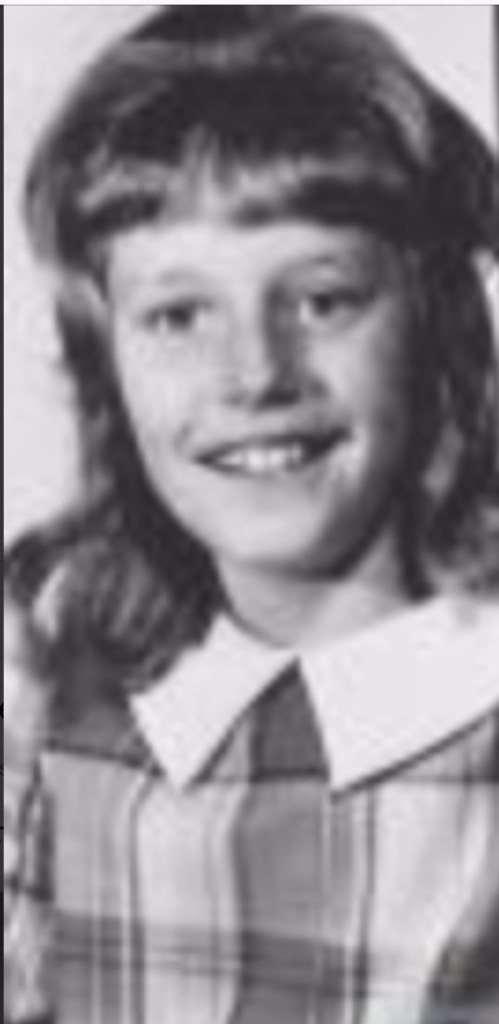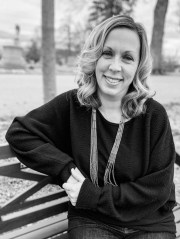“We now have multiple people telling us to look into this guy so I think we should,” I told Bridget.
“Do you really think it’s NOT the man on the porch?” Bridget asked me skeptically, referring to who the killer may have been.
“I don’t know what to think at this point, but we have to explore every lead we get.” Again, my head was telling me that the man on the porch was involved, but I couldn’t just ignore another lead.
“I know,” Bridget replied, “but it’s going to take a lot to convince me it’s someone other than the man on the porch.” Then we got to work.
****
I have developed a warm regard for the many people I’ve encountered on this journey of telling Cheryll’s story. They have opened up to me about their memories of that time and have chosen to put it all out there knowing that after fifty years, it’s become a watershed moment. Being able to correspond with and talk to a multitude of people who lived on Rose Avenue in the 1960s and after, has been so helpful when painting the picture of what life was like on that street. It’s been so richly described to me that I can imagine it as if I was living right there among them at the time–kids playing ball in the street, riding bikes through the neighborhood, laughing and playing in the yards of the homes, and waiting on each other to walk to the bus stop together in the mornings. In fact, as they recount their memories of their childhoods there, I reminisce about my own childhood in my own neighborhood and feel blessed that I too was able to live those years surrounded by good people and childhood friends. I try to empathize with the Rose Avenue neighborhood kids who are now adults when they recount how everything changed after October 19, 1971. Innocent childhoods and a picturesque neighborhood were shattered that day, and in the aftermath, many of those people are still seeing life through that broken lens that they’ve tried to piece back together over the years.
When the messages and phone calls began to trickle in from people who lived on Rose Avenue, I realized that they seemed to have a few different purposes. A few just wanted me to know that someone else was looked at by the police at the time, an FYI. Others wanted me to know that they felt strongly that someone on their street may have been the killer, not the man on the porch. And others were reaching out to ask me to do some research about a second (or third) person of interest because they just weren’t and still aren’t sure what to think. But the one thing they all had in common in their messages is a driving, deep yearning to know the truth of what happened to Cheryll. And as completely committed I am to telling Cheryll’s story, I am also as committed to trying to find these special people some answers.
I have learned that while there was quite a large group of kids living in the neighborhood, ages about 15 and younger, there were some older kids in the neighborhood as well. I don’t know whether to actually call them kids because they were 19-20 at the time, or to call them young men. 19 year olds still seem like kids to me as they’re still learning about themselves and the world, but some 19 year olds have done a lot of living and are definitely adults. These young men living on Rose Avenue resided with their families–parents, siblings, and one of them also with a wife and two children, which, a young marriage and children at age 19 in 1971, wasn’t unheard of. They had brushes with the law– charges of arson, theft of automobiles, and drug related offenses. There is talk of stolen cars which were stripped down, their parts being sold to make money. Domestic abuse seems to be a theme as well, with stories of physical violence against members of their own families. Remember in 1971, domestic violence laws weren’t like they are today and the police usually didn’t respond to such incidents. The Rose Avenue kids have shared that they rarely interacted with the older guys and didn’t commonly see them approach the younger group, but there was a definite sense that that crowd and their friends were not to be messed with. They worked on their souped-up hot rod cars in their yards while the younger kids happily played together. And that’s how it went for some time until the afternoon of October 19, 1971.
The afternoon of Cheryll’s abduction, the local police swept through Rose Avenue questioning many of the men–young and old–living on the street. Many male residents were supplying work records, alibis, and some even volunteered to take polygraph tests (though I don’t know how many were given to people who volunteered). Some former residents recall the police even looking in people’s cars, right there on the street, sometimes as onlookers gathered, probably looking for any evidence of Cheryll having been in the car. What was found, if anything, in the work records, lie detector test results (if actually given), or inside of cars is not something that anyone seems to know. Hopefully that information is housed in the official police file. But even if evidence of any sort was gathered from these methods, it clearly wasn’t enough to charge anyone.
Here is where I begin some internal dialogue with myself. If the police swept in and were looking for a possible suspect there on Rose Avenue, the residents could feel the intensity of the situation. And once Cheryll was discovered murdered, it was a terrifying and desperate time for everyone. If the sense was that someone there on the street must have murdered Cheryll, the natural, but unfortunate inclination of people would be to quietly start pointing fingers. Maybe it was someone in her family– after all, her stepmom was rumored to have been mean to her. Maybe it was the man on the porch– though he didn’t live on the street, he’d sit in his car and watch the school kids. Or maybe it was someone on the street that people thought was a bad guy based on what they knew about him at the time. And even now, almost 50 years later, people are still relying on their gut instincts to help determine the murderer because, without the police findings in the case file, there isn’t much else to go on, for now.
****
Moira
One warm summer morning, Bridget and I made a trip to visit Moira Reed, our intuitive friend, to discuss Cheryll’s case further, now that more time has passed and new discoveries made. Before we left, she said she had one last thing she wanted us to do. I watched as she produced a stack of cards which she in turn handed me to me. As I looked at Moira and at the cards, I wasn’t quite sure what to do when Bridget, seeing my obvious confusion, jumped in.
“Here let me see them,” she said. As I went to hand her the stack of cards she stopped me and said, “Hold them there.” When I did, I watched as she knocked on the top of the stack three times.
“Oh my gosh,” I laughed and sort of rolled my eyes. Bridget, having had her cards read before, knew what to do and laughed in return at my awkwardness. I, never having my cards read before, was clearly an amateur. “You have to clear the energy,” she explained with a smile.
“Now shuffle them,” Moira continued calmly, “then pull one out of the deck. Let’s see what the cards say about your investigative journey.” As Moira and Bridget sat talking for a moment, I gently shuffled, and reshuffled, and reshuffled the cards, feeling them pass between my fingers. I stopped, then softly ran my fingers across the large deck of cards, as each individual card lay facedown in a fanned out deck I had created. I reached into the deck with my other hand and confidently pulled one out. I flipped it over on to the table in front of me, my curiosity piqued as to what it would say.
The purple card laying in front of me had the word “Awakening” boldly written across the top, as well as a drawing of an upside down fairy on it. Across the bottom these words were scrolled: “Change the way you’re looking at the situation. Embrace your uniqueness. A temporary pause in the action.” In a corresponding book, the card was explained even further. “It’s time for a change in perspective. Seeing your challenges in an entirely different way can help you end a stagnant situation. Ask God, the angels, and the fairies to give you signs that will help you perceive things in a whole other light. A new point of view. Seeing beyond what’s obvious. Giving so that others can gain.”
Moira asked me to read it out loud and I did as I was already reflecting internally as to what it could mean, feeling that the words were very much explaining where I was in the journey.
“Wow….” Bridget said with a smile and a nudge as she sat next to me. “Well, there you go. That all makes sense, doesn’t it?”
I found that I couldn’t help but grin and said quietly, “Yes, I think it does.”


Not familiar with that deck but the Rider Waite equivalent is the Hanged Man.
The meaning is the same; nonetheless it might be interesting to know how the suspects died.
Porch Man ended up in a “nursing home” & died fairly young, 8 years after his mother. But he would be taking a huge risk to dispose of a body in an area with so many relatives nearby.
Finally, the father has connections in Cincinnati, where the other Cheryl was killed, by someone in a motorcycle gang, & “motorcycle people” were associated with the stepmother’s family. There is that other similarity in the murders that can’t be discounted.
LikeLiked by 1 person
What about the shoe?
LikeLike
No shoes or clothes have ever been found. We still aren’t sure what the clue about the shoe means.
LikeLike